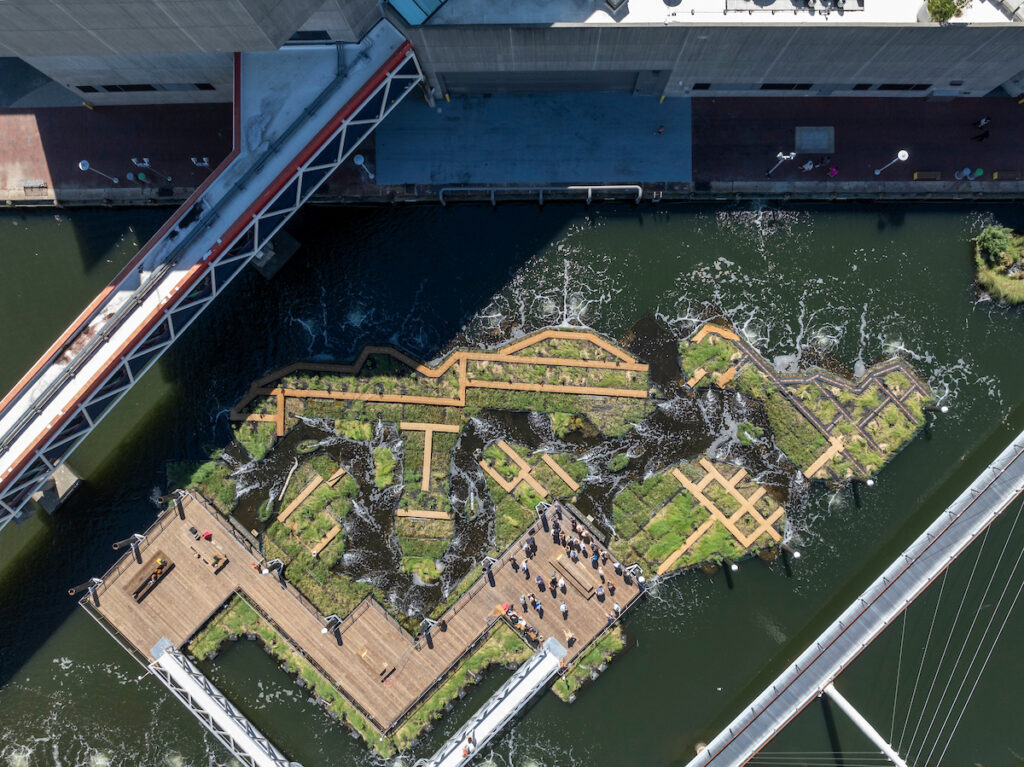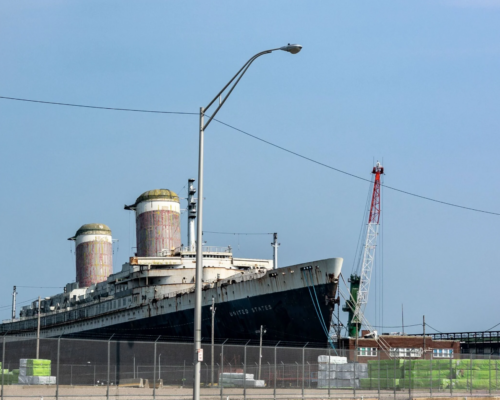Something unexpected has arrived at Baltimore’s Inner Harbor. Amid the touristy paddleboat rentals, the National Aquarium, and the World Trade Center, a labyrinth of lush floating wetlands and walkways has sprung up.
Harbor Wetland is a 10,000-square-foot floating wetland modeled after a Chesapeake Bay tidal marsh habitat. It’s exactly the kind of habitat that once graced the Inner Harbor, pre-development.
The wetland is built along a maze-like floating pier between Piers 3 and 4 by the National Aquarium. But unlike most of the Aquarium, entry to the wetland exhibit is free. Its purpose is twofold: one, the constructed wetland serves as habitat to attract and support aquatic life in a body of water into which, until recently, no one would dare dip a toe. Two, it’s a floating classroom that allows visitors to learn about the wetland and the species drawn to it. Take a look (click photos to enlarge):
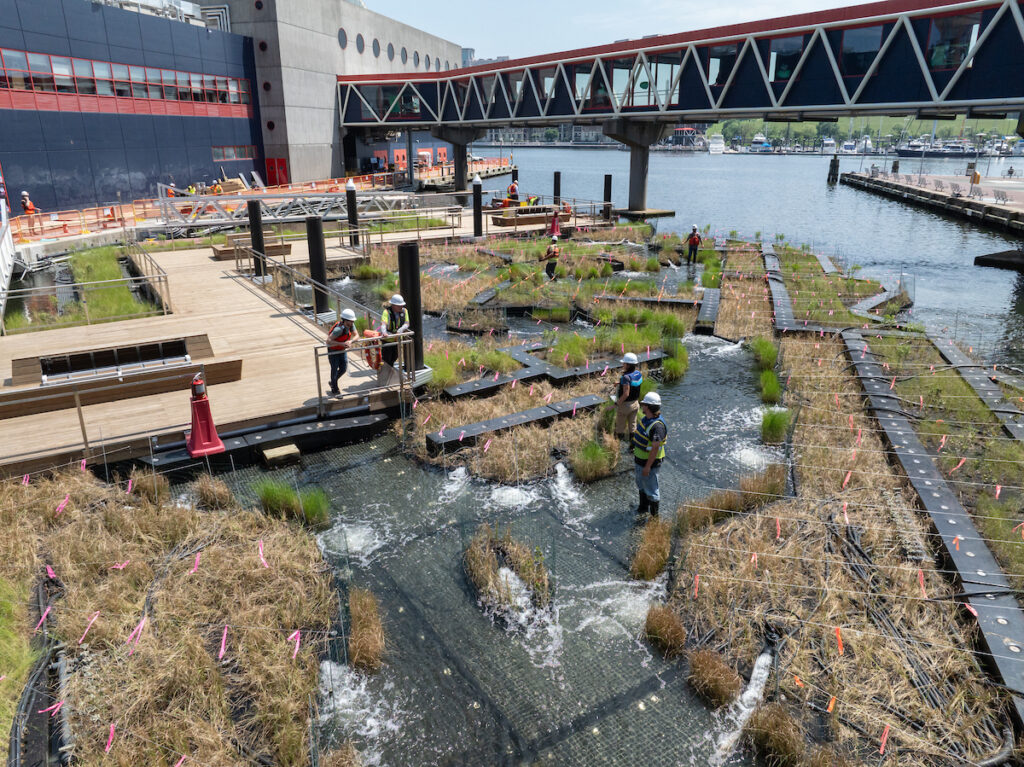
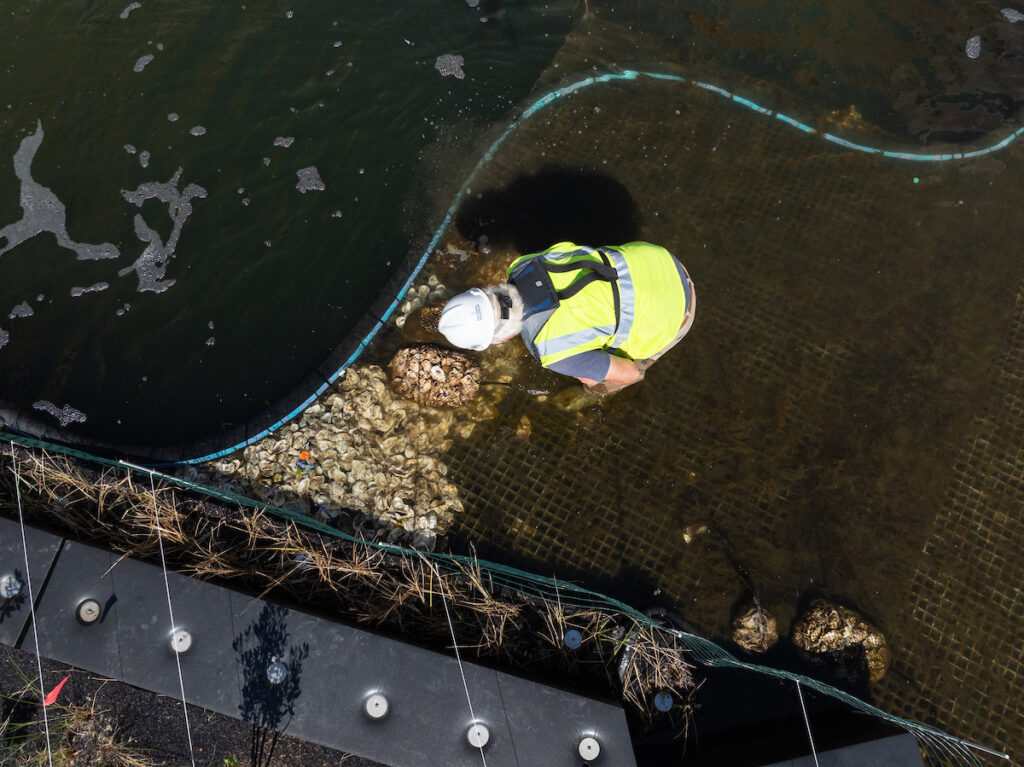
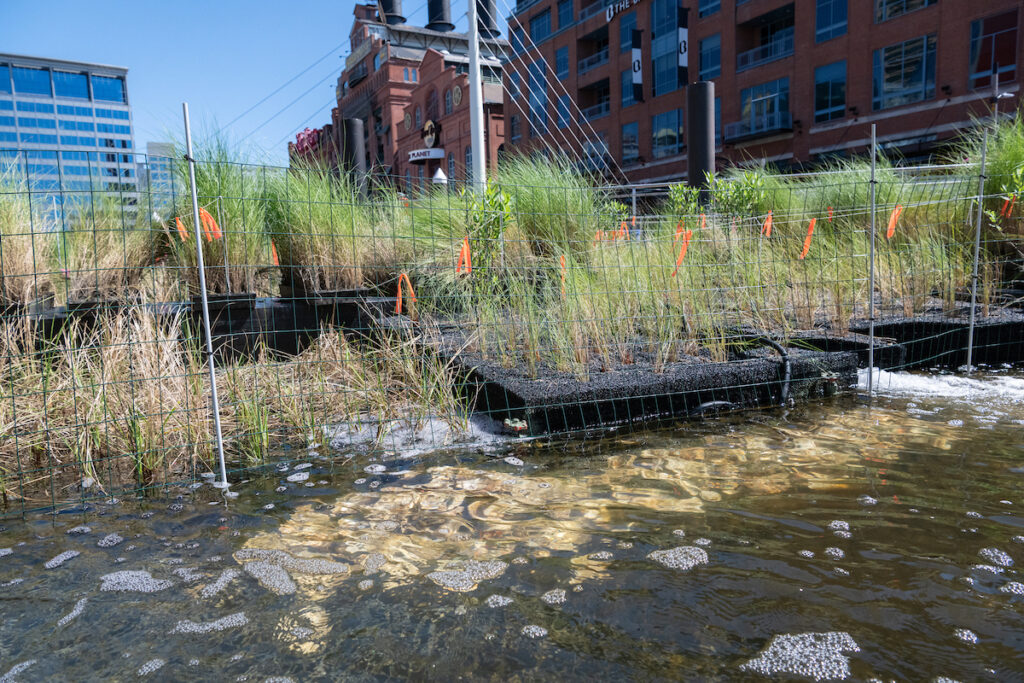
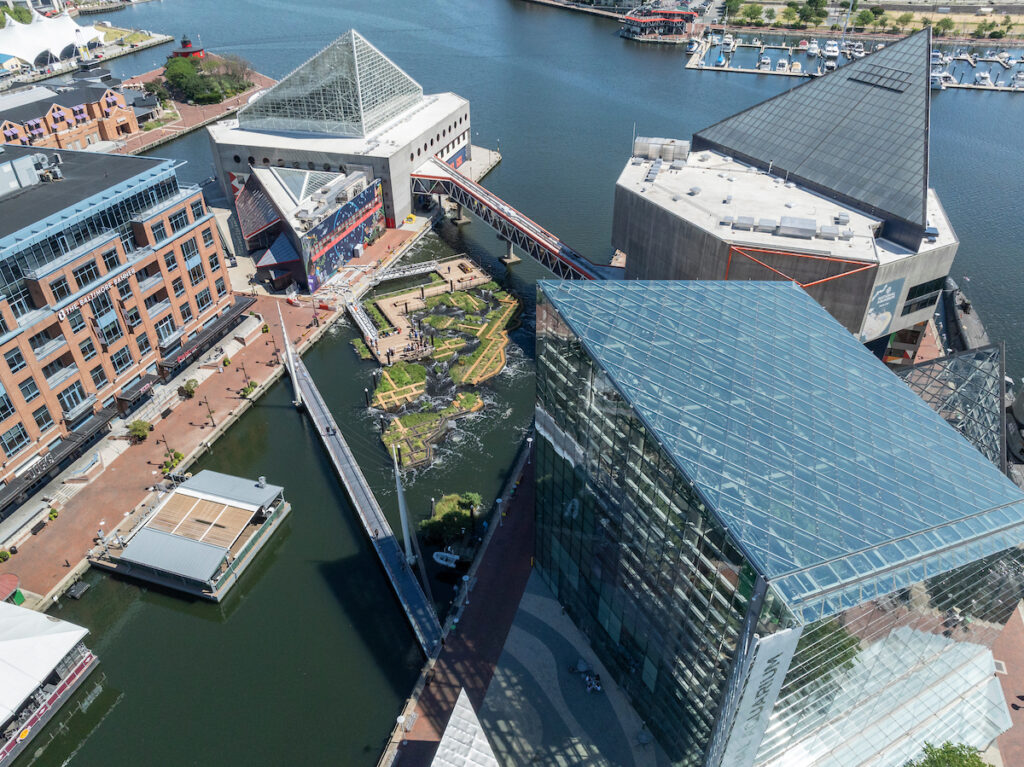
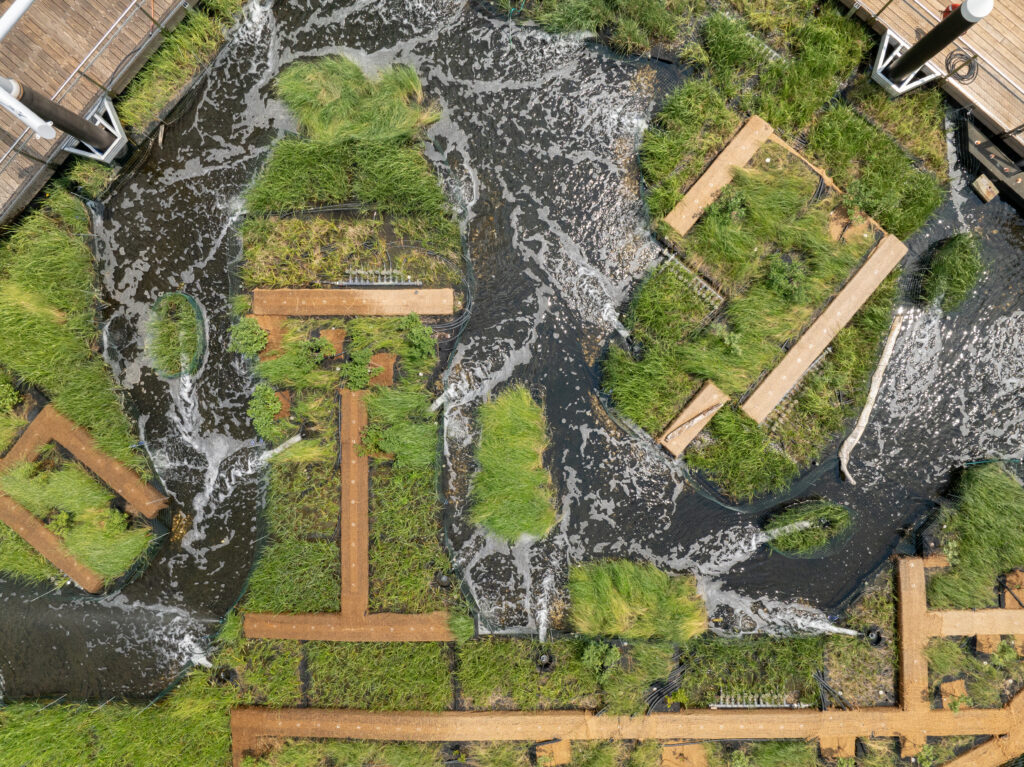
Inner Harbor visitors may have noticed a small area of grasses on a floating platform in the past seven years. That smaller wetland became the base for the public attraction that opened this week.
Even though the wetland aims to bring the Inner Harbor closer to a natural state, it is surprisingly high-tech and complex. The habitat is made from recycled plastic matting coated with UV protection for durability. The matting planted with tidal wetland shrubs and grasses, whose roots will grow down into the water (cleaning the water and making hiding spots for species in the water).
The matting is fixed to a system of air-regulated, adjustable pontoons that can change the wetlands’ buoyancy as the wetland grows and becomes heavier. Water is circulated through the wetland’s shallow channel by thousands of bubbles created with compressed air using ceramic airstones. The bubbles also release oxygen into the surrounding water, raising dissolved oxygen levels and keeping the water moving around the wetland.
The dream of an Inner Harbor wetland took more than a decade and $14 million to bring to fruition. Its 32,000 native shrubs and marsh grasses are made possible by local CFG Bank and investments from The Whiting-Turner Contracting Company, The Bunting Family Philanthropies, Constellation and others.
“Harbor Wetland is the culmination of 12 years of research, innovation and determination,” said Aquarium President and CEO John Racanelli. “We’re so excited to welcome Baltimore residents and visitors out onto the water for a close-up view of the vibrant, living habitat taking root here in the Inner
Harbor.”
While floating wetlands do exist in some other cities, Baltimore’s wetland is the first of its kind because the buoyancy and air-circulating systems have never been done before. The Aquarium team has applied for three scientific patents, which are currently pending.
Jack Cover, the Aquarium’s curator whose extensive time in tidal wetlands informed the design, says there’s strong evidence the Harbor water is improving and the wetland will continue that momentum.
“We hear so much negative talk about Inner Harbor water quality, but there is life in this water and there always has been,” Cover said. “My hope is that people see the life this wetland attracts, from tiny microorganisms to fishes, crabs, water birds and even small mammals like muskrats and otters—all of which we’re already seeing here.”
Along with the public, Baltimore City Public School sixth-graders will get to visit Harbor Wetland through the What Lives in the Harbor curriculum.

